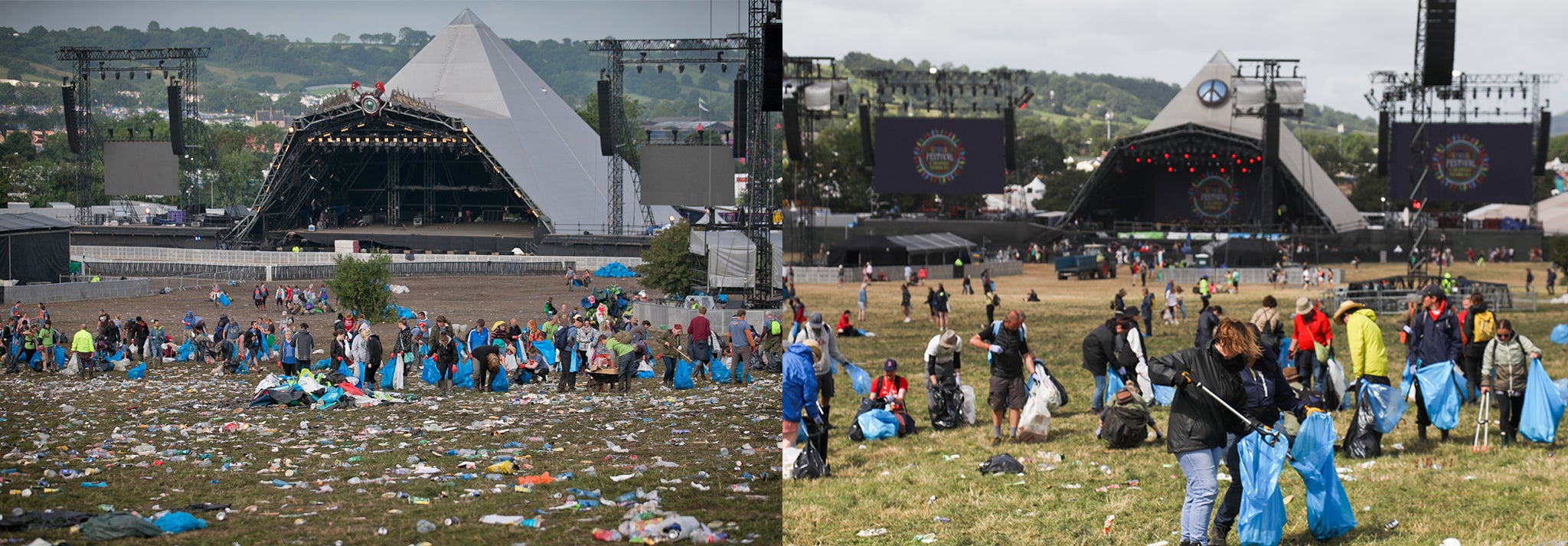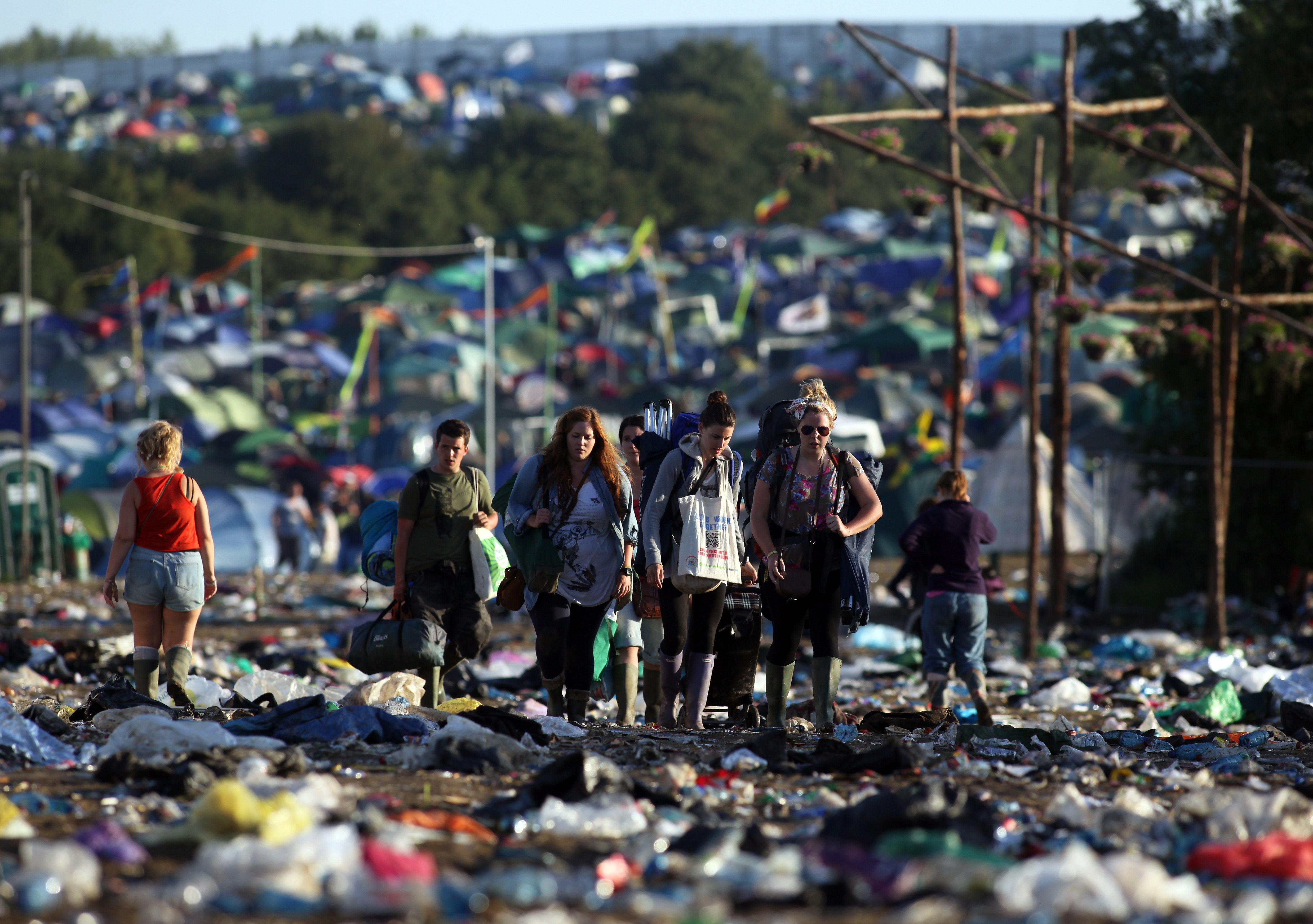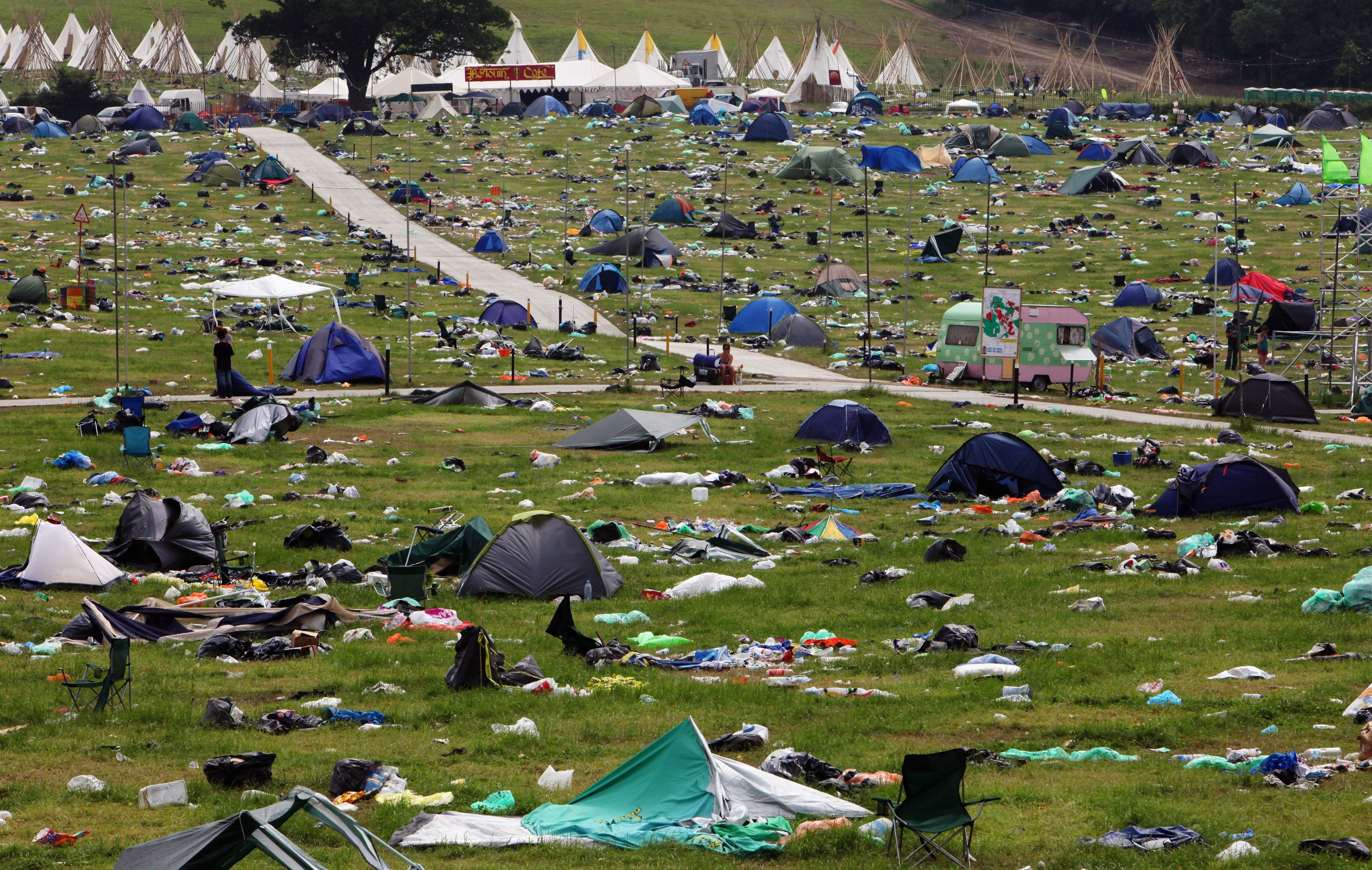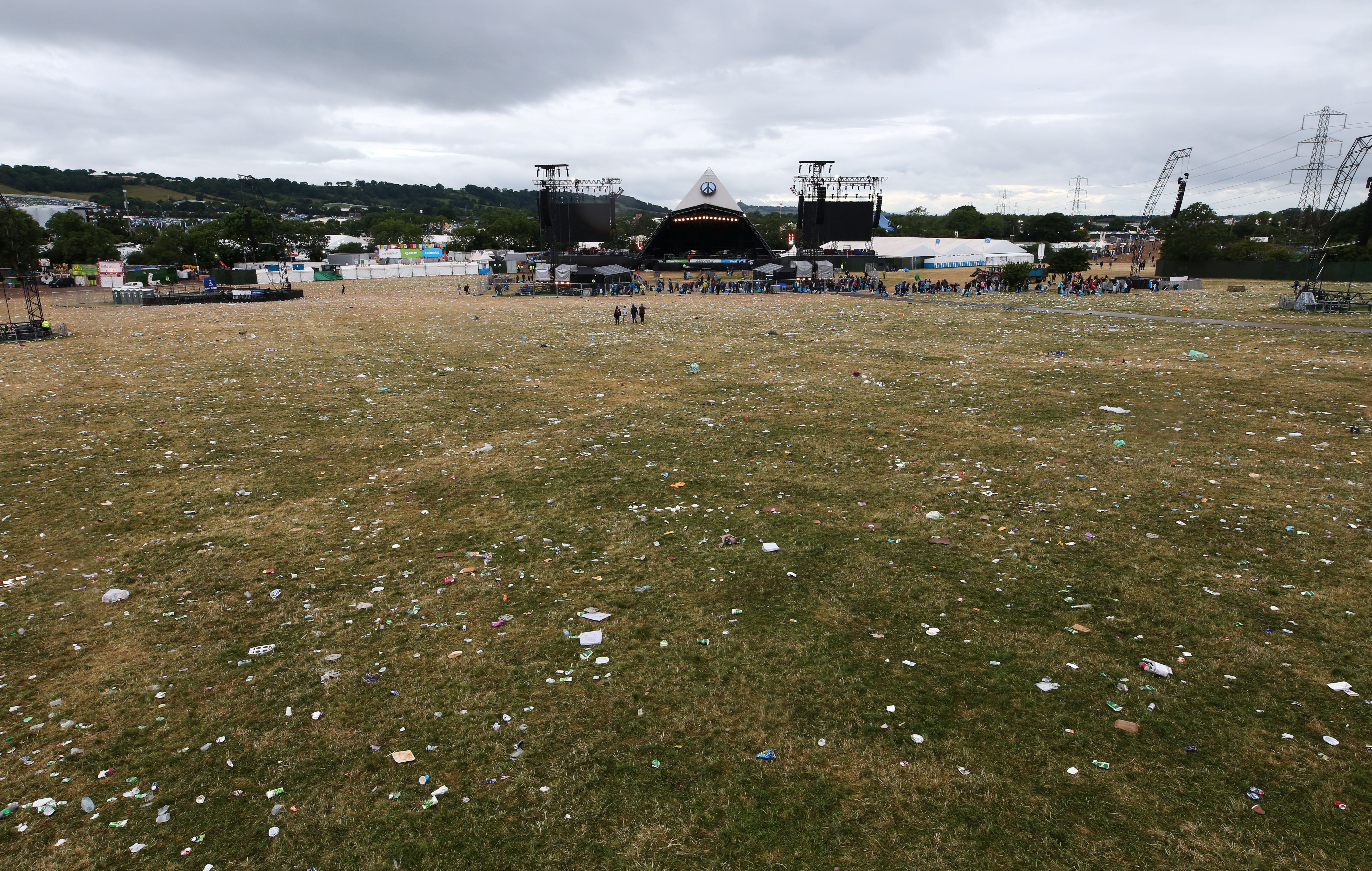Glastonbury clean up: Are festival-goers becoming more environmentally conscious?
The five-day music festival produces more than 2,000 tonnes of waste
As revellers left Glastonbury Festival this year, the usual images of the site’s green fields strewn with litter began to appear online.
But photos of the festival aftermath show the amount of debris in June appeared to be down on previous years when the site looked like a scene from a dystopian movie set.
The swift clean-up of the fields and images showing far less litter, discarded tents and camping chairs on the ground than were captured in previous years suggest promising progress.

But it was not immediately clear, however, if this was due to festival-goers becoming more environmentally-conscious or due to an uptick in litter picking throughout the weekend. Glastonbury says more than a thousand recycling volunteers help to clear up the site.
Organisers tweeted a picture the Monday after the event showing a clean field in front of the Pyramid stage along with the caption: "The litter pickers have already been doing an amazing job."
The five-day music festival, which transforms Somerset fields into a makeshift city of 200,000 people, usually produces more than 2,000 tonnes of waste.
Glastonbury has a long history of progressive environmental policies and encourages festival goers to “Love the farm: Leave not trace.” But in recent years, it has stepped up its efforts to tackle its waste and carbon footprints.
In 2019, it banned the sale of plastic bottles and now only allows compostable or reusable plates and cutlery - including drinking straws.


Around half of all waste created by Glastonbury Festival is reused or recycled, and the site is estimated to compost more food waste than the national average.
In the past, abandoned tents at music festivals used to be a real problem thanks in part to a mistaken belief that they were donated to charity.
But in 2019, the last time Glastonbury festival was on before the pandemic, organiser Emily Eavis said 99.3 per cent of all tents were taken home, indicating a behaviour change among attendees.


But there is always more that can be done.
In 2019, scientists found that high levels of illegal drugs such as cocaine and ecstasy had been detected in a river that runs through the site endangering fish and other wildlife.



Join our commenting forum
Join thought-provoking conversations, follow other Independent readers and see their replies
Comments